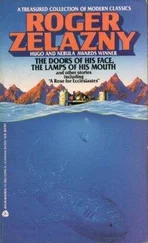When Riske rolled up to the scene, he found Boztepe and Rasmussen, who were still tending to Kato-the-Akita, and the officer quickly straightened out the confusion about why the police were needed. Boztepe took Riske across the street and showed him the pathway to number 875. The officer shined his flashlight on the corpse of Nicole Brown Simpson.
Nicole was lying at the base of four stairs that led up to a landing and the front door. The pool of blood around her was bigger than she was. Blood covered much of the imitation-tile walkway leading to the stairs, a path that was bordered on both sides by shrubbery. When Riske pointed his flashlight to the right, he saw another body. It was a muscular young man with his shirt pulled up over his head. The man, later identified as Ronald Goldman, was slumped against the metal fence that separated 875 from the property next door. Near Goldman’s feet, Riske identified three items: a black hat, a white envelope stained with blood, and a single leather glove. Turning back to Nicole, Riske made out a single fresh heel print in the blood next to her body. Perhaps the most important thing to Riske was what he didn’t find: Despite all the blood, there were no bloody shoe prints coming out the front gate onto the sidewalk by Bundy Drive.
Careful not to make tracks in the blood, Riske tiptoed through the bushes to the left of the pathway, past Nicole’s body, and up to the landing. From the landing, he shined his flashlight on a walkway that stretched the entire northern length of the property. Along this 120-foot-long corridor, Riske saw a single set of bloody shoe prints. It appeared that the killer had gone out the back way, to the alley that Nicole shared with Pablo Fenjves and other neighbors. On closer inspection, Riske noticed something else: fresh drops of blood to the left of those shoe prints. While leaving the scene, the killer might well have been bleeding from the left hand.
The front door to 875 South Bundy was open. Riske walked in to a scene of domestic calm. Nothing was out of place: no signs of ransacking or theft. Candles flickered in the living room. The officer walked up the stairs. There were lighted candles in the master bedroom and master bath, too, and the tub there was full of water. There were two other bedrooms, with a young girl asleep in one and a younger boy in the other.
Robert Riske knew his place in the chain of command. Once he had identified the dead and closed off access to the scene, his only responsibility was to summon the investigators, who would begin looking for clues. This was a major crime in an unlikely locale. (Eventually, there would be 1,811 murder victims in Los Angeles County in 1994, but these two were only the ninth and tenth of the year in the West Los Angeles division of the LAPD and the first two of the year in Brentwood.) As Riske prepared to summon assistance on his “rover,” a portable walkie-talkie, he noticed a letter on the front hall table. The return address indicated that it was from O.J. Simpson. The former football star was also depicted in a poster on the north wall of the home. On closer inspection, Riske found photographs of Simpson among the family pictures scattered on tables.
These discoveries prompted a change in Riske’s plans. He decided to call for help on the telephone because, as he testified later, “I didn’t want to broadcast over my rover that there was a possible double homicide involving a celebrity.” Reporters monitored the police bands, and if he had used his rover, he said, “the media would beat my backup there.”
Robert Riske was only a four-year veteran of the LAPD when he made his grisly discoveries. His name had never even appeared in the Los Angeles Times , but as his actions demonstrated, he had already developed an interest in, and some sophistication about, the ways of the press. In this he was typical. More than any other police force in the nation, the LAPD was locked in a strange and complex symbiosis, of several decades’ duration, with the media.

The modern Los Angeles Police Department was largely the creation of one man, William H. Parker. Born in 1902 and raised in the hard fields of South Dakota, Parker came to resemble in character the austere setting of his youth. He moved west to Los Angeles in 1923 and drove a cab to support himself while he studied at one of the many fledgling law schools that were springing up around the city. He joined the LAPD in 1927, worked a night shift on patrol, and became a member of the bar in 1930. Some years later, he made the acquaintance of another young LAPD officer, Gene Roddenberry, who eventually turned to writing science fiction and created Star Trek . The character of Spock is said to be based on Bill Parker.
Parker joined the force at a propitious time for an ambitious and incorruptible young officer. For years the LAPD, along with the rest of Los Angeles city government, had floated on a sea of graft and payoffs. The situation became so intolerable in the 1930s that the city’s business leaders decided changes had to be made. They hired from out of town a series of reform-minded police chiefs, who brought with them the gospel of “professionalization” of the force. The new leadership improved training, cracked down on corruption, and worked to insulate the police from what was then seen as the sinister influence of elected officials. This last goal became the special mission of Bill Parker. Working in tandem with the police union, Parker drafted changes in Section 202 of the city charter, which put a cast-iron shield of civil-service law around all police officers. After voters approved these measures in 1937, it became virtually impossible to fire cops; they could only be dismissed by a panel of their invariably sympathetic brethren. The law even decreed that the police chief would be selected according to civil-service guidelines, which meant that the LAPD would determine for itself who would serve as its leader. Once selected, the chief would also enjoy the protection of the civil-service law, which amounted to lifetime tenure in the top spot of the LAPD. As Joe Domanick, a historian of the LAPD, has written of the changes in Section 202, “A quasi-military organization had declared itself independent of the rest of city government and placed itself outside the control of the police commission, City Hall, or any other elected public officials, outside the democratic system of checks and balances.”
Parker became chief in 1950, when Los Angeles was in the midst of a period of spectacular postwar growth. At that point the city was no longer, in H. L. Mencken’s phrase, “a double Dubuque”-an insular, nearly all-white outpost of the Midwest on the Pacific Ocean. But if Los Angeles was changing, the LAPD was not. Parker’s model for his force was the Marine Corps, and so the police became tantamount to an army of occupation for those in the city who did not share Parker’s ethnic heritage. As far as the rest of the world was concerned, though, the LAPD under Bill Parker became known as a model of efficiency and skill. This did not happen by accident. Shortly after Parker took charge, he became acquainted with a young radio producer named Jack Webb. In 1949, Webb had started a radio series, Dragnet , based on the exploits of the LAPD. At first Parker was suspicious of the show, worried that it might place his beloved department in an unflattering light. Aware of his discomfort, Webb proposed a deal: In return for the LAPD’s cooperation, he would give the department the right to approve every script. Parker’s suspicions eased. When Dragnet moved to television, Parker understood just how advantageous an arrangement he had struck. Sergeant Joe Friday became the paradigm of what Parker wanted in an LAPD officer: an incorruptible white man who, with scientific detachment, descended on neighborhoods where he had no personal or emotional ties to clean up the messes made by the vaguely distasteful residents of the city. Soon Parker was only too happy to have Dragnet conclude each week with the announcement “You have just seen Dragnet , a series of authentic cases from official files… Technical advice for Dragnet comes from the offices of Chief of Police W. H. Parker, Los Angeles Police Department.” Jack Webb, who later wrote an admiring biography of Parker, had created one of the longest-lived genres in television programming, the L.A. police drama, which has included, at various times, The Mod Squad , Adam 12 , Felony Squad , Blue Thunder , S.W.A.T. , Strike Force , Chopper One , The Rookies , Hunter , and T. J. Hooker . As Joe Domanick wrote, “For twenty-five consecutive seasons at least one LAPD police show was being aired on network television.” They portrayed the LAPD in a manner that made Bill Parker proud.
Читать дальше













